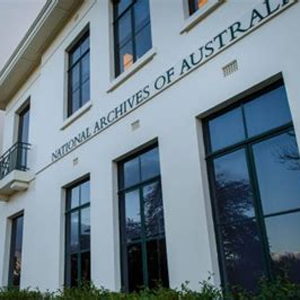Government Responds to Tune Review

Australian federal government records managers can rest easy in their jobs for now, with the government rejecting a proposal to centralise the public service's record-keeping at the National Archives of Australia (NAA). It announced the decision in a response to the Tune Review, a major review of the Agency.
The Government also agreed to reform the Archives Act 1983 in consultation with the National Archives and relevant departments and agencies
The Tune Review proposed an information management model referred to as the Government Information Management Model (GIMM), where records management across government would be centralised into the National Archives.
Under the model, around 63 per cent (approximately the largest 20 agencies) of the 1,000 staff employed by agencies on records and information management would transfer their employment to the NAA.
The Government has responded that it “considers that whilst the goals are sound, the GIMM model proposed would require substantial work and resource transfers across government, that could take a significant period of time and many years before benefits could be realised. Furthermore, there is a need to develop the capability and technology of the National Archives in preparation for the enormity of this role.
“Accordingly, while the Government agrees with the way that Mr Tune has articulated the risks and the outcomes to be achieved, the Government intends to, in the short to medium term, adopt an approach that focusses on better collaboration and training across government using a revitalised committee process.”
“ …. the structural changes of the GIMM could be explored further as a potential second stage of reform, subject to a final business case, and at a time when the government is confident that the National Archives is well prepared for the scale of the change.”
The Government said it has agreed in full or in principle to all recommendations of the Review, after announcing in June $A67.7m in additional funding to undertake urgent preservation of threatened records.
Assistant Minister to the Attorney-General Amanda Stoker said this forms the next step in the agency's journey to stay contemporary in the digital era.
"We recognise the importance of securely preserving our nation's memory, that's why the Morrison Government is focusing on strengthening the agency's cyber security capability as part of its work to digitise at-risk records."
"It's important the National Archives is equipped for the challenges of the digital age."
The $A67.7 million in funding for the National Archives will go towards:
• Digitisation and preservation of the National Archives' at-risk collection over an accelerated four-year digitisation program.
• Additional staffing and capability to address backlogs for ‘access applications' for Commonwealth records and provide improved Digitisation on Demand services.
• Investment in cybersecurity and further development of the National Archives' Next Generation Digital Archive to facilitate secure and timely transfer of records to the National Archives' custody, their preservation and digital access.
Other responses to the Tune report include a commitment to “integrate the National Archives in important discussions and forums across government departments and agencies which influence decision-making about information and data governance.”
Currently, agencies that create records are responsible for maintaining and storing them until the agencies makes decisions about which records are of archival significance and are transferred to the National Archives (around 10 percent of all records).
The Tune Review noted that the existing storage framework of records within existing agencies is inefficient, as agencies tend to store most of their records for a long time, even though ultimately most of them can be destroyed. The Review considers this is caused by poor sentencing practices. The Review argued that a centralised offsite storage solution, with an on-demand digitisation service to give agencies access to their records, would be more efficient.
Doing so at a regional location that is less expensive than the capital cities, but still accessible with relative ease, would be likely to represent an appropriate balance between reducing costs and improving ease of access – and such regional options should be explored. Mr Tune said that this should not occur without a final business case being conducted. There is the potential for a Centralised Storage and Preservation Model (CSPM) to, in the long term, deliver savings to the Australian taxpayer, and that potential should be measured in the business case.
The Government responded that it “acknowledges the limitations of current storage practices and notes the potential efficiencies to be gained from streamlined storage solutions, but it is important that mass storage and infrastructure amalgamation is not undertaken without first exploring alternative options. The funding provided by the Government will enable the exploration of the prospect of generating efficiencies by consolidating storage capabilities.”
More information is available at Australian Government's Response to the Functional and Efficiency Review of the National Archives of Australia.
